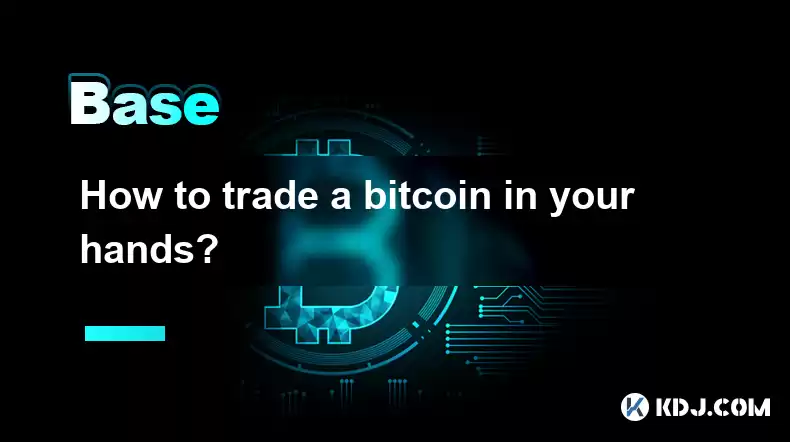-
 Bitcoin
Bitcoin $115200
-2.68% -
 Ethereum
Ethereum $3601
-5.16% -
 XRP
XRP $3.035
-2.96% -
 Tether USDt
Tether USDt $0.9997
-0.04% -
 BNB
BNB $764.5
-5.43% -
 Solana
Solana $168.1
-5.92% -
 USDC
USDC $0.9998
-0.02% -
 Dogecoin
Dogecoin $0.2090
-4.80% -
 TRON
TRON $0.3272
-0.49% -
 Cardano
Cardano $0.7306
-5.00% -
 Hyperliquid
Hyperliquid $39.16
-12.22% -
 Stellar
Stellar $0.3967
-4.96% -
 Sui
Sui $3.566
-5.95% -
 Chainlink
Chainlink $16.55
-6.57% -
 Bitcoin Cash
Bitcoin Cash $552.3
-3.90% -
 Hedera
Hedera $0.2516
-4.69% -
 Avalanche
Avalanche $21.99
-5.75% -
 Toncoin
Toncoin $3.621
-0.28% -
 Ethena USDe
Ethena USDe $1.000
-0.03% -
 UNUS SED LEO
UNUS SED LEO $8.951
0.02% -
 Litecoin
Litecoin $105.9
-3.59% -
 Shiba Inu
Shiba Inu $0.00001232
-5.00% -
 Polkadot
Polkadot $3.640
-5.55% -
 Uniswap
Uniswap $9.048
-7.03% -
 Monero
Monero $301.8
-1.51% -
 Dai
Dai $0.9999
-0.01% -
 Bitget Token
Bitget Token $4.334
-3.66% -
 Pepe
Pepe $0.00001064
-6.17% -
 Cronos
Cronos $0.1367
-5.78% -
 Aave
Aave $259.2
-4.59%
How to trade a bitcoin in your hands?
通过币安、OKX等平台注册并验证身份后,可出售比特币并提现,或通过LocalBitcoins等P2P平台直接交易,或使用比特币ATM机进行交易。
Apr 26, 2025 at 08:22 pm

通过加密货币交易所进行交易
- 选择交易平台:例如币安(Binance)、欧易(OKX)、Coinbase 等知名的大型交易平台,它们通常具备严格的合规流程和安全保障措施。
- 注册和身份验证:在所选的交易平台上完成注册,并按照要求进行实名认证,通常需要上传身份证等有效证件的照片,可能还需提供手持证件的自拍,以确保交易的合法性和安全性。
- 关联支付方式:将银行账户、第三方支付平台等与交易平台进行绑定,用于后续的资金充值和提现。不过要注意,部分支付机构可能禁止与虚拟货币交易相关的操作,需提前了解清楚。
- 出售比特币:在交易平台上找到比特币的交易对,比如 BTC/USDT 等,点击“出售”或“卖出”按钮,输入要出售的比特币数量,并根据市场行情选择以市价单或限价单的方式出售。市价单会以当前市场最优价格立即成交;限价单则是在市场价格达到你设定的价格时成交。
- 提取资金:交易完成后,如果你想将资金提取到自己的银行账户或其他支付账户,可在平台上进行提现操作,将法币提现到之前绑定的账户中。
通过 P2P 交易平台进行交易
- 选择 P2P 平台:如 LocalBitcoins、Paxful 等,这些平台提供了一个比特币买卖双方直接交易的场所。
- 注册和身份验证:在平台上注册账号并完成身份验证,有些 P2P 平台的验证流程可能相对复杂,以确保交易的安全性。
- 发布出售信息:说明你要出售的比特币数量、价格、可接受的支付方式等信息,等待买家联系你。或者你也可以主动查找合适的买家发布的求购信息。
- 协商和交易:与买家协商确定交易的具体细节,包括价格、支付方式、交易时间等。达成一致后,按照平台的交易流程进行操作,一般是买家先将款项支付给平台托管,你确认收到款项后,再将比特币发送到买家指定的储存地址,平台在确认比特币到账后会将款项释放给你。
通过比特币 ATM 进行交易
- 查找 ATM 机:使用相关的地图应用或比特币 ATM 机查找网站,找到附近的比特币 ATM 机,并了解其支持的支付方式和交易限额等信息。
- 前往 ATM 机操作:携带现金或银行卡前往 ATM 机,按照屏幕提示进行操作,输入要出售的比特币数量和选择的支付方式等信息。
- 完成交易:确认交易信息无误后,将比特币发送到 ATM 机指定的储存地址,同时 ATM 机会吐出相应的现金或完成银行卡的转账操作。
Disclaimer:info@kdj.com
The information provided is not trading advice. kdj.com does not assume any responsibility for any investments made based on the information provided in this article. Cryptocurrencies are highly volatile and it is highly recommended that you invest with caution after thorough research!
If you believe that the content used on this website infringes your copyright, please contact us immediately (info@kdj.com) and we will delete it promptly.
- Cardano Price, Pi Network, and Crypto Presales: What's the Buzz?
- 2025-08-02 08:50:12
- XRP Fund Success: Teucrium CEO Reveals Trillions on the Horizon
- 2025-08-02 09:10:12
- Challenge Coins: More Than Just Collectibles – A Military Tradition
- 2025-08-02 08:30:12
- Under the Radar: Hunting for 100x Crypto Gems in a Pi Network World
- 2025-08-02 08:30:12
- Bitcoin, Solana, and Altcoin Season: What's Hot and What's Not?
- 2025-08-02 07:10:12
- Toncoin, Rollblock, and the Token Offering Landscape: A New York Minute
- 2025-08-02 07:10:12
Related knowledge

What is the difference between CeFi and DeFi?
Jul 22,2025 at 12:28am
Understanding CeFi and DeFiIn the world of cryptocurrency, CeFi (Centralized Finance) and DeFi (Decentralized Finance) represent two distinct financia...

How to qualify for potential crypto airdrops?
Jul 23,2025 at 06:49am
Understanding What Crypto Airdrops AreCrypto airdrops refer to the distribution of free tokens or coins to a large number of wallet addresses, often u...

What is a crypto "airdrop farmer"?
Jul 24,2025 at 10:22pm
Understanding the Role of a Crypto 'Airdrop Farmer'A crypto 'airdrop farmer' refers to an individual who actively participates in cryptocurrency airdr...

What is the difference between a sidechain and a Layer 2?
Jul 20,2025 at 11:35pm
Understanding the Concept of SidechainsA sidechain is a separate blockchain that runs parallel to the main blockchain, typically the mainnet of a cryp...

What is the Inter-Blockchain Communication Protocol (IBC)?
Jul 19,2025 at 10:43am
Understanding the Inter-Blockchain Communication Protocol (IBC)The Inter-Blockchain Communication Protocol (IBC) is a cross-chain communication protoc...

How does sharding improve scalability?
Jul 20,2025 at 01:21am
Understanding Sharding in BlockchainSharding is a database partitioning technique that is increasingly being adopted in blockchain technology to enhan...

What is the difference between CeFi and DeFi?
Jul 22,2025 at 12:28am
Understanding CeFi and DeFiIn the world of cryptocurrency, CeFi (Centralized Finance) and DeFi (Decentralized Finance) represent two distinct financia...

How to qualify for potential crypto airdrops?
Jul 23,2025 at 06:49am
Understanding What Crypto Airdrops AreCrypto airdrops refer to the distribution of free tokens or coins to a large number of wallet addresses, often u...

What is a crypto "airdrop farmer"?
Jul 24,2025 at 10:22pm
Understanding the Role of a Crypto 'Airdrop Farmer'A crypto 'airdrop farmer' refers to an individual who actively participates in cryptocurrency airdr...

What is the difference between a sidechain and a Layer 2?
Jul 20,2025 at 11:35pm
Understanding the Concept of SidechainsA sidechain is a separate blockchain that runs parallel to the main blockchain, typically the mainnet of a cryp...

What is the Inter-Blockchain Communication Protocol (IBC)?
Jul 19,2025 at 10:43am
Understanding the Inter-Blockchain Communication Protocol (IBC)The Inter-Blockchain Communication Protocol (IBC) is a cross-chain communication protoc...

How does sharding improve scalability?
Jul 20,2025 at 01:21am
Understanding Sharding in BlockchainSharding is a database partitioning technique that is increasingly being adopted in blockchain technology to enhan...
See all articles

























































































